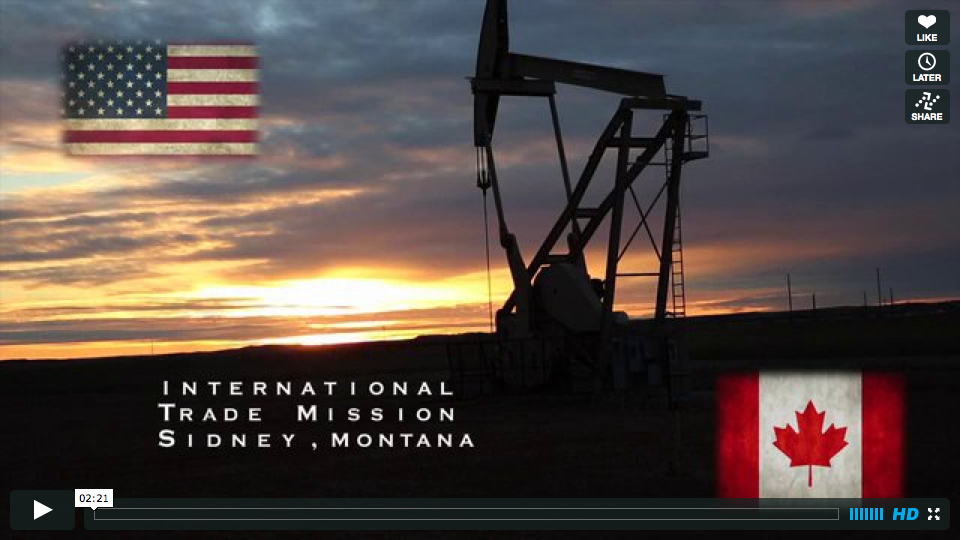Written by Janelle Holden
In December 2012, 5.19 Sales & Marketing connected communities in Eastern Montana with business leaders looking to launch a first-of-its-kind housing project for oil and gas workers in the Bakken region.
With the guidance of the Eastern Montana Impact Coalition (EMIC) and the commitment of IAP Worldwide Services (IAP), the Eagles Landing Housing Community Project was born.
 Just nine months later Sidney, Montana is now home to phase one of Eagles Landing, a state-of-the-art housing facility that includes 339 beds, private rooms, chef-prepared meals, free daily breakfast, a commercial grade laundry facility, housekeeping services, fitness center, 24-hour security and ample parking.
Just nine months later Sidney, Montana is now home to phase one of Eagles Landing, a state-of-the-art housing facility that includes 339 beds, private rooms, chef-prepared meals, free daily breakfast, a commercial grade laundry facility, housekeeping services, fitness center, 24-hour security and ample parking.
In this interview, Troy Selland of 5.19 Sales & Marketing shares lessons learned from the project and the secret to creating successful business ventures in the Bakken region.
Janelle: “So Troy, how did this project get started?”
Last December, I flew into Wolf Point, Montana with senior leaders from IAP to meet with EMIC executives. With over 60 years of expertise in remote site operations, IAP was looking for a community in the Bakken region in which to build and operate a multi-million dollar workforce housing community.
We toured six sites across Montana and North Dakota. All of them were potentially a good fit for a large-scale project, but the company was impressed by the opportunities that existed in Montana and how the EMIC represented the region.
Janelle: “Who is IAP Worldwide Services and why were they interested in building?”
IAP specializes in providing temporary housing solutions in remote locations around the world. It’s a company that has the capability to build specialized housing solutions in virtually any environment around the world. In the past, they have worked primarily with government agencies and were looking to expand into the private sector.
Janelle: “I’ve heard that Montana has had trouble in the past winning contracts like these. Is that true and if so, what made the difference here?
Montana has historically lost out on similar opportunities to other oil states such as North Dakota and Texas and the field was open to IAP to build anywhere in the world.
In early 2012, EMIC formed to address community challenges in the Bakken region and they welcomed IAP into the community. The coalition wanted to help solve a regional housing shortage that was persistent, challenging and frustrating.
When they met, the coalition members spoke with one clear voice about their visions, challenges and hopes for a region that is roughly the size of the state of New York. This made the difference with IAP as it was clear that an opportunity truly did exist for them in Montana.
Janelle: This project was built in record time and it seems like everyone in the community has been happy with the result. How did that happen?
Good communication and great partners. The coalition worked with the company to ensure that every phase of design, planning and construction would address and resolve the community’s concerns and fit with Montana culture.
As a result, Eagles Landing has become home to more than just oil and gas industry personnel. Current and future residents include county employees, policemen, electricians, and even families.
Janelle: What have you learned about doing business from this project?
When I look at the history of this project, I’m proud of Montana for finding a creative way to work with businesses and solve community challenges in the Bakken. The real secret to the success of the project was combining the visionaries of IAP with the local members of the EMIC. Including community input via the coalition and building local support is the secret for businesses looking for long-term success in Montana’s Bakken region.
 Troy Selland is the Founder of 5.19 Sales & Marketing, based in Livingston, Montana. He has over fifteen years of leadership and consulting experience in the commercial airline, ground logistics, and oil and gas sectors. 5.19 Sales and Marketing helps firms of vision find their place, and ultimate success, in today’s unconventional energy industry.
Troy Selland is the Founder of 5.19 Sales & Marketing, based in Livingston, Montana. He has over fifteen years of leadership and consulting experience in the commercial airline, ground logistics, and oil and gas sectors. 5.19 Sales and Marketing helps firms of vision find their place, and ultimate success, in today’s unconventional energy industry.
For More Information: 5.19 Sales & Marketing: www.five-nineteen.com
Eagles Landing Project: www.iapeagleslanding.com
EMIC: www.gndc.org/EMIC%20page.htm











